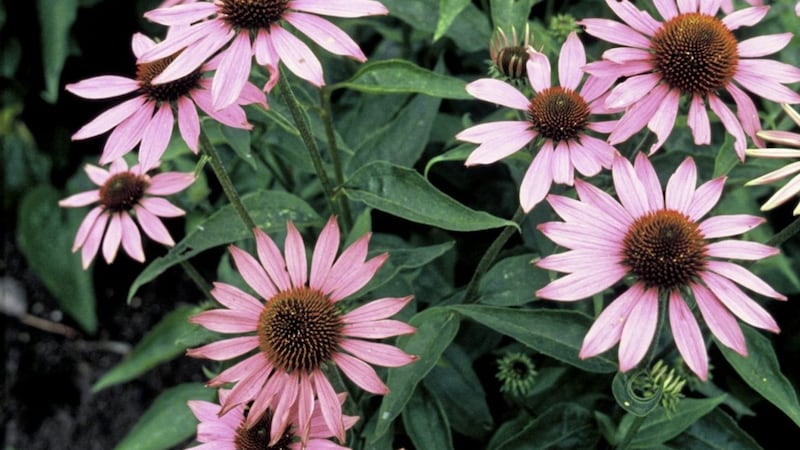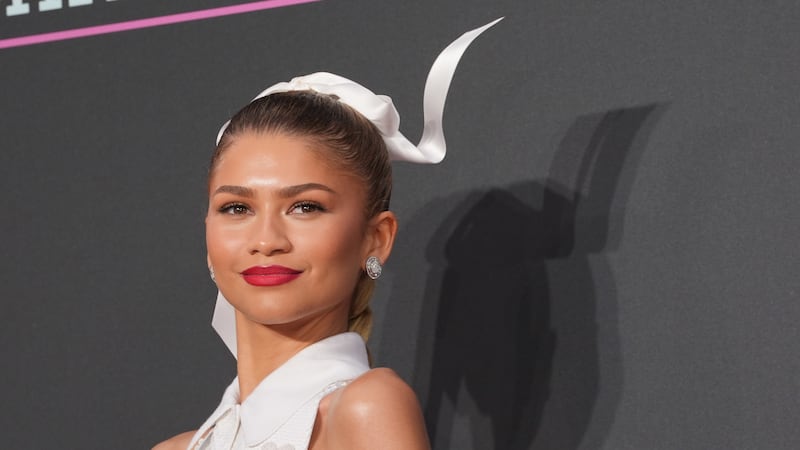‘HEAT’ is a powerful sensory stimulus – look at how it is used in advertising everything from perfumes to cars. Heat equates to danger, excitement, sexual attraction. Plants can very much evoke a sense of heat too, with vivid colours setting the pulse racing.
Rudbeckia and echinacea are two prairie flowers that love it as the mercury climbs and look just right shimmering in the sun. Add into the mix the calming balance of some flowering grasses and you have a ready-made planting combination that will cope with the driest of summers.
Rudbeckia and echinacea are quite similar plants, both with a North American, prairie heritage, but the hairy leaves of echinea are a handy clue for distinguishing one from the other. Both are superb border perennials, combine well with ornamental grasses and are attractive to bees and butterflies. They’ll add glorious colour through the summer months and will look impressive in open woodland settings or as part of meadows of wild flower areas. They love full sun but will be equally at home in light shade.
Rudbeckia fulgida ‘Goldsturm’ – popularly known as 'black eyed Susan' – is one of the most outstanding varieties available. It has charismatic yellow, daisy-like flowers that are 9-12cm across on stems of up to 60cm. However, it is short enough not to need staking, does not form big clumps too quickly and has a very long flowering period, substantially increased if flowers are deadheaded as they fade.
Echinacea purpurea is an absolute winner, flowering from August through to October, depending on location. Colour options include purple-red, in the case of ‘Bright star’ through the deep purple of ‘Magnus’ to the pure white of ‘White Lustre’ and ‘White Swan’. Echinacea purpurea reaches 1.5m in height and a spread of 50cm. They are fully hardy and thrive on well-drained chalk, loam or sand.
Summer flowering grasses – the ‘flowers’ are the highly decorative seedheads – are adaptable and can grow successfully even in poorer soils. They are extremely versatile and perfect for centrepiece positions. As they move in the breeze they bring sound and motion to the garden, giving it a wide open space feel. Grasses are a soft and sympathetic element in the garden and offer the ideal counterpoint to hot, sexy flowers.
Look out for members of the Pennisetum family. Pennisetum alopecuroides ‘Hameln’ is compact, with bottle-brush flowerheads and dark green leaves that turn golden-yellow in autumn. The leaves of Pennisetum villosum can reach up to 60cm in length and take on a purple hue when fully grown. Pennisetum orientale is a mound forming grass with dark green leaves and bears beautiful flowerheads up to 14cm long. Other suggestions of great grasses are: Zebra grass (miscanthus) or reed grass (calamagrostis).
Once established, these grasses and perennials are delightfully low maintenance. In autumn, it’s good to cut stems down to the base to encourage strong regrowth in spring. This means that ‘hot summer colour’ doesn’t have to be hard work, leaving plenty of time for the serious business of outdoor enjoyment.








